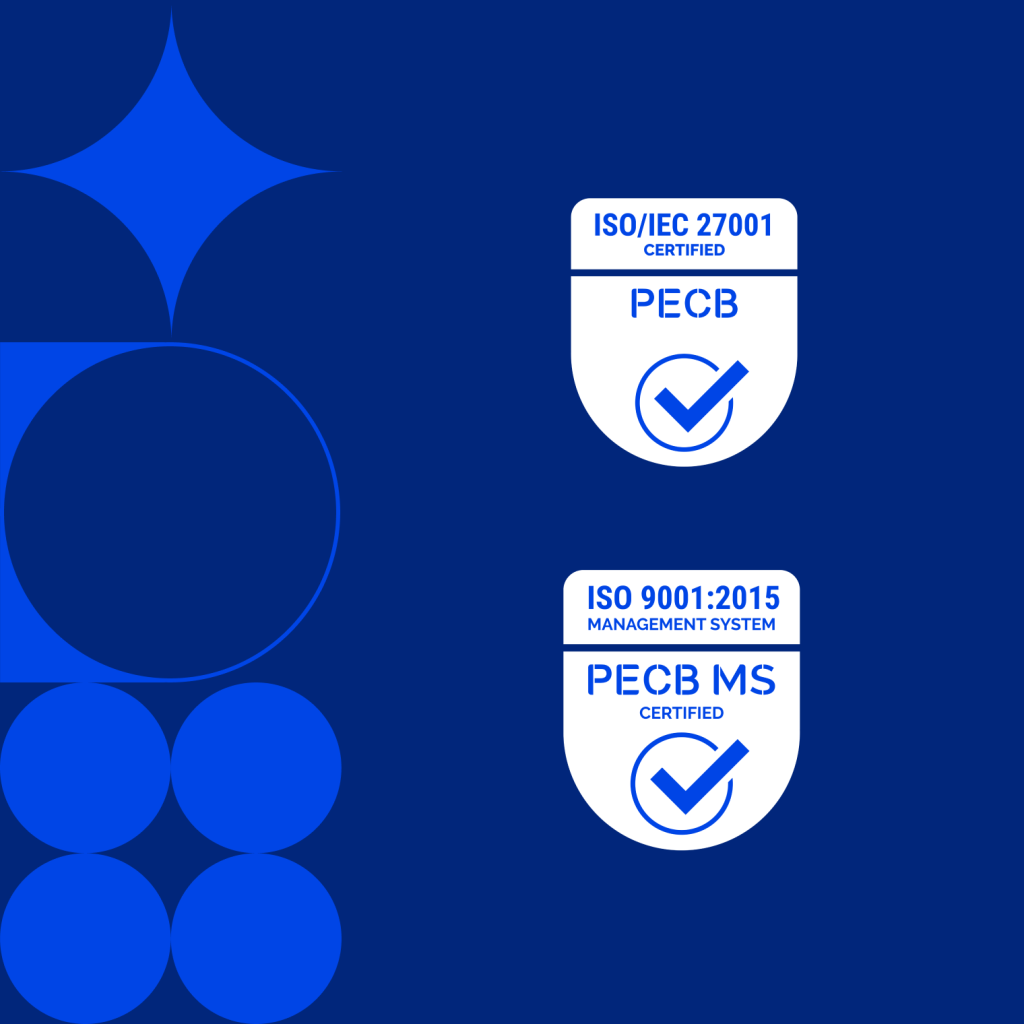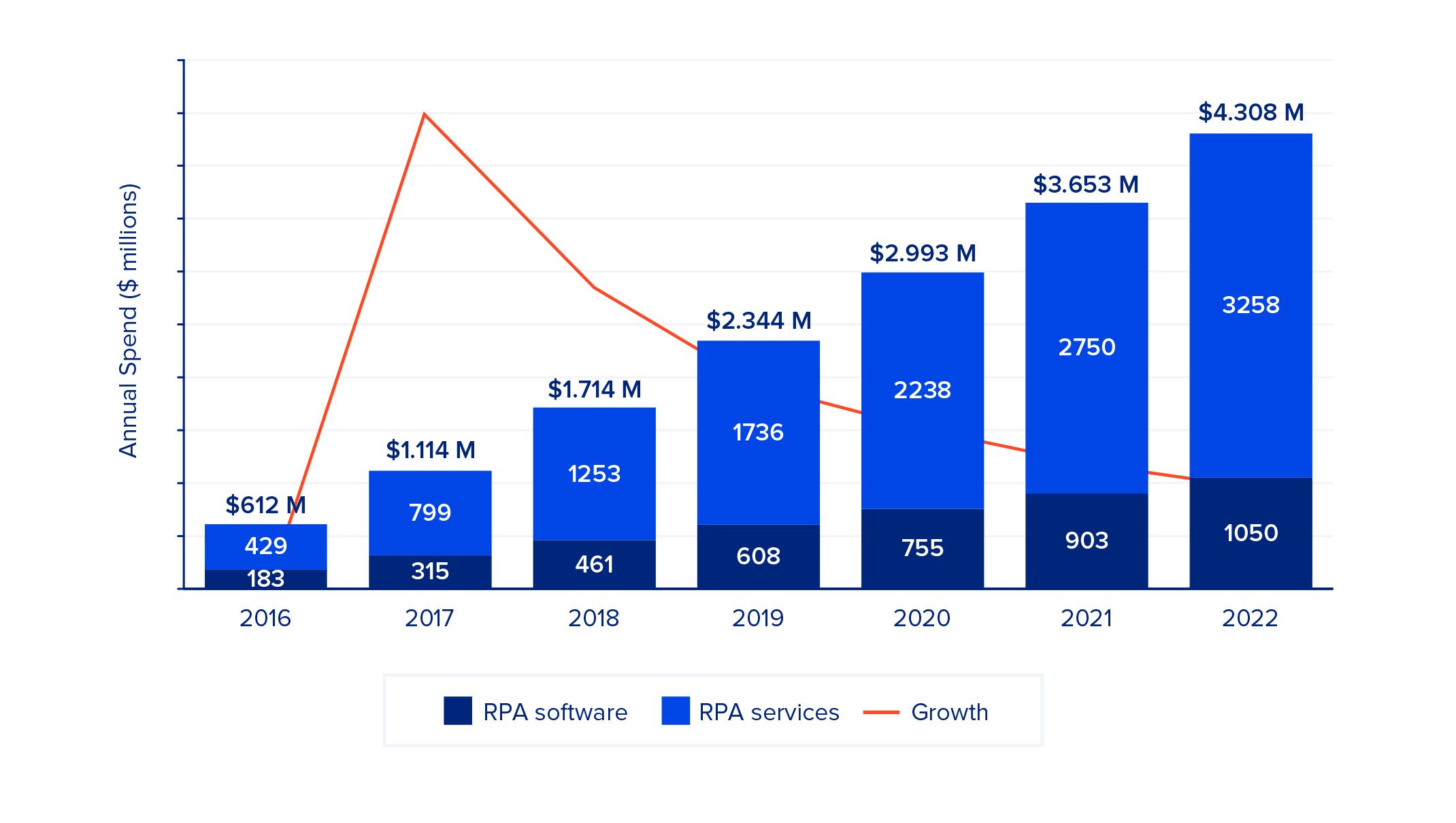
What is Robotic Process Automation?
Compared to long-standing process automation technology, RPA offers a broader, more intelligent route to automating repetitive business processes. RPA is a logic-based bot that relies on structured data and is driven by pre-existing, set business rules. This is in contrast to artificial intelligence (AI) and machine learning algorithms which are better at dealing with open-ended questions, but more taxing to implement.
Nonetheless, RPA typically operates as an independent application that can connect across enterprise systems, implementing elements of more advanced computing logic such as AI to overcome many of the constraints imposed by legacy process automation.
RPA can also overlap with human efforts, augmenting existing processes that were previously fully handled by manual steps. This aspect of RPA is particularly relevant when it comes to customer service automation. In fact, there are two types of RPA:
- Assisted RPA. Here a process is completed in part with robotic assistance, but a staff member will still intervene at certain stages. Assisted RPA may be relevant where queries are typically too complex, or too unstructured for full automation.
- Unassisted RPA. In other cases, robotic process automation can take care of a business process on an end to end basis, without any type of human intervention. With unassisted RPA the task at hand is fully automated.
So, RPA is a flexible enterprise-spanning automation approach that can deliver time and money-saving results wherever a process is well-defined, data-intensive and involves high transaction volumes.
“53% of respondents have already started their RPA journey. This is expected to increase to 72% in the next two years. If this continues at its current level, RPA will have achieved near-universal adoption within the next five years.” According to Deloitte’s survey.
Why RPA? Why now?
Just like process automation in the broad, the benefits of RPA are not hard to see. Of course, RPA goes beyond decades-old process automation by simply being easier to set up and apply and by operating on a more flexible, more intelligent basis. In turn, RPA brings the following benefits:
- Quick route to automation. RPA is cost-effective, scalable, and easy to implement when comparing to traditional automation techniques relying on back-end automation which requiring massive IT transformation, substantial investments and complex approval process.
- Reduce operational risks. Where RPA replaces a manual process or indeed augments a manual process the underlying risks of getting things wrong are reduced. Humans are prone to error, robotic processes less so.
- Keep existing systems. RPA does not involve a wholesale overhaul of existing systems. Instead, RPA acts as a helper, just like a human would. Companies can use RPA on top of existing, trusted, reliable systems.
- Save costs. According to Automation Anywhere, on average 50% of organisations spend around $5-$25 to manually process invoices. On the one hand, RPA enables companies to keep their existing systems, enabling process optimisation within the existing technology context. On the other hand, RPA reduces the need for manual labour, allowing for the full-time employee (FTE) cost reduction along with 24*7 availability and high accuracy.
Overall, RPA is a shortcut to effective process automation that is independent of existing systems and platforms and which can be applied to a wide range of businesses cases.
The benefits of RPA adoption are significant. Payback was reported at less than 12 months, with an average 20% of full-time equivalent (FTE) capacity provided by robots. RPA continues to meet and exceed expectations across multiple dimensions including: improved compliance (92%), improved quality/accuracy (90%), improved productivity (86%), cost reduction (59%), according to Deloitte.
The global pandemic has also spurred the acceleration of adopting RPA tools. From processing loans in the banking industry to assisting with handling coronavirus tests, RPA has supported the businesses behind the scenes. Despite the COVID-19’ economic pressure on various industries, the RPA trend is not going anywhere and is expected to continue in 2021 and beyond.
How does RPA fit in with customer service?
Customer service automation is a typical use-case of RPA as many companies deal with customers on a range of predictable, repetitive requests. Where can RPA be of use in a customer service environment? The example can be a software robot applied to improve client support in logistics and transportation. A robot can provide and accurate answers to numerous customer questions. "Where is my package?' or "How can I change my delivery details? – a chatbot can easily process such type of requests, without taking up valuable time of 'live' customer services teams.
68% of service leaders indicate that software robots and VCAs will be more important in the next two years, according to Gartner. Service centres should seriously be considering how this technology could be integrated into current operations, in both customer-facing and rep-facing systems.
Here are some more examples:
- Ensure around-the-clock services. The pandemic has introduced changes to consumers’ behaviour, which are likely to stay once things start to get back to normal. According to the recent “State of Marketing” study by Salesforce, 84% of customers, as compared to the 80% in 2018, consider the experiences provided by the company as important as its products and services. This indicates that digital experiences are only going to rise and improve to meet customer needs. The prompt responses significantly contribute to a better user experience and higher customer satisfaction index. RPA can deliver the answers customers need around the clock particularly where customer cases are routine and straight forward. Software robots can address simple requests allowing customer service representatives to focus on some more complex tasks.
- Filter junk requests. RPA can be deployed as a defence against spammers, keeping at bay robotic requests that tie up customer service teams. Using RPA as a customer service front-end ensures that low-priority and unimportant customer service requests do not eat up valuable staff time.
- Tap into data analytics. Humans need to manually look up data points, but an RPA-enabled process can supply customers with immediate data insights, whether that’s the progress of an order or indeed the exact delivery time of an item. RPA can also help human customer service assistants get faster access to live, pertinent customer data. According to IBM's report, within a 6-minute customer service call, 75% of that time is devoted to agents doing manual research, with valued customer interaction at a dismal 25%. Since robots can quickly process vast amounts of unstructured information into a coherent whole, they can be applied beyond customer services to help automatically prepare, analyze and interpret data.
- Enable self-service. The most sophisticated RPA implementations can give customers what they want – a quick, easy way to get requirements taken care of, without the need to hold for a staff member. Intelligent RPA can provide comprehensive customer self-service solutions.
Thanks to RPA many enterprises are reducing the need for expensive staff members to deal with mundane customer care requests while lifting customer satisfaction thanks to the more reliable and faster service that RPA offers.
Learn more about the new wave of AI-powered data analytics in our blog: Accelerating Enterprise Insights with Augmented Analytics
Getting started with RPA for customer service automation
Earlier in this article, we outlined how RPA does not involve the wholesale redesign of processes, nor widescale changes to existing systems. Instead, RPA can be applied on top of existing ways of working. All you need is a trusted provider of custom application development services with experience in RPA implementations.
Contact us to book your consultation with software development experts at ELEKS and see how robotic process automation can enhance your customer service experience.

Related Insights








The breadth of knowledge and understanding that ELEKS has within its walls allows us to leverage that expertise to make superior deliverables for our customers. When you work with ELEKS, you are working with the top 1% of the aptitude and engineering excellence of the whole country.

Right from the start, we really liked ELEKS’ commitment and engagement. They came to us with their best people to try to understand our context, our business idea, and developed the first prototype with us. They were very professional and very customer oriented. I think, without ELEKS it probably would not have been possible to have such a successful product in such a short period of time.

ELEKS has been involved in the development of a number of our consumer-facing websites and mobile applications that allow our customers to easily track their shipments, get the information they need as well as stay in touch with us. We’ve appreciated the level of ELEKS’ expertise, responsiveness and attention to details.



